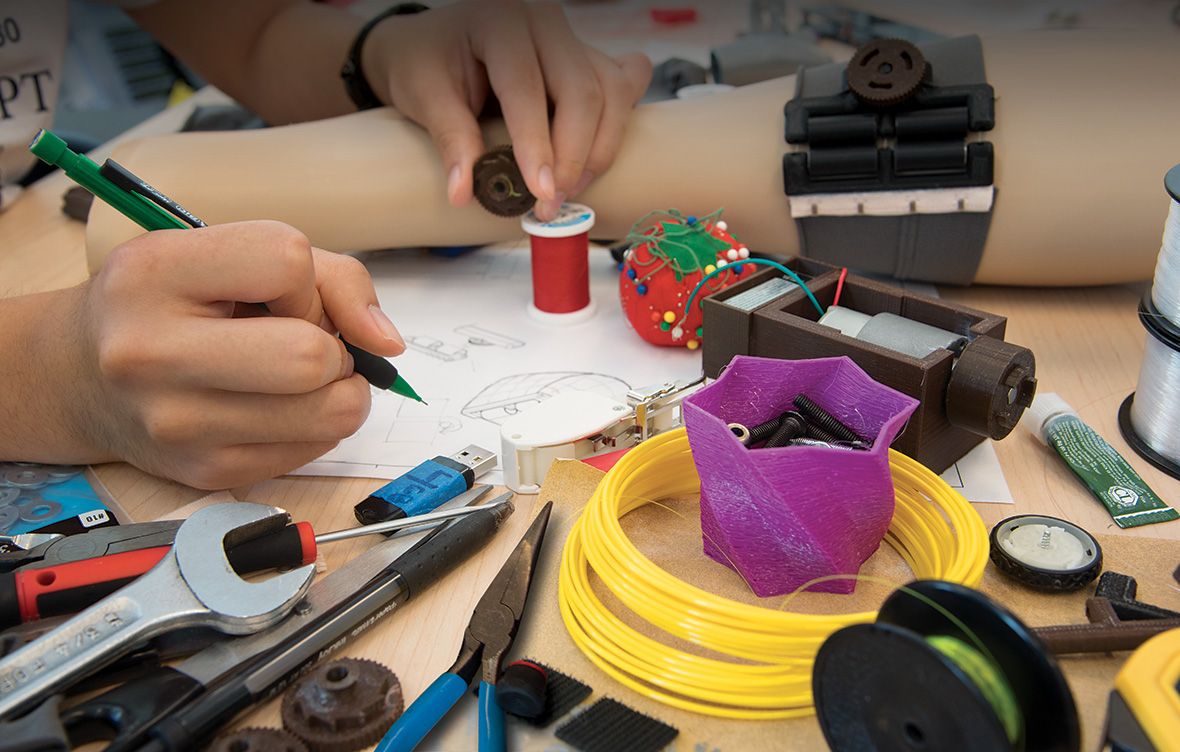
“If only there were a better ____________________ .”
Doctors say it’s frustrating when the tool, test or procedure they need to deliver exceptional patient care doesn’t yet exist. Although they may recognize these shortcomings, physicians often lack the time, expertise or means to address them. Undaunted, teams of Washington University students are bringing fresh perspectives to real-world clinical needs.
Founded in 2013, IDEA (Innovation, Design and Engineering in Action) Labs is a student-driven bioengineering design and entrepreneurship incubator. It works in partnership with the schools of Medicine and of Engineering & Applied Science and the Skandalaris Center for Interdisciplinary Innovation and Entrepreneurship. Through this multidisciplinary program, undergraduate, medical and other graduate students collaborate to develop innovative, potentially marketable solutions to physician-identified problems.
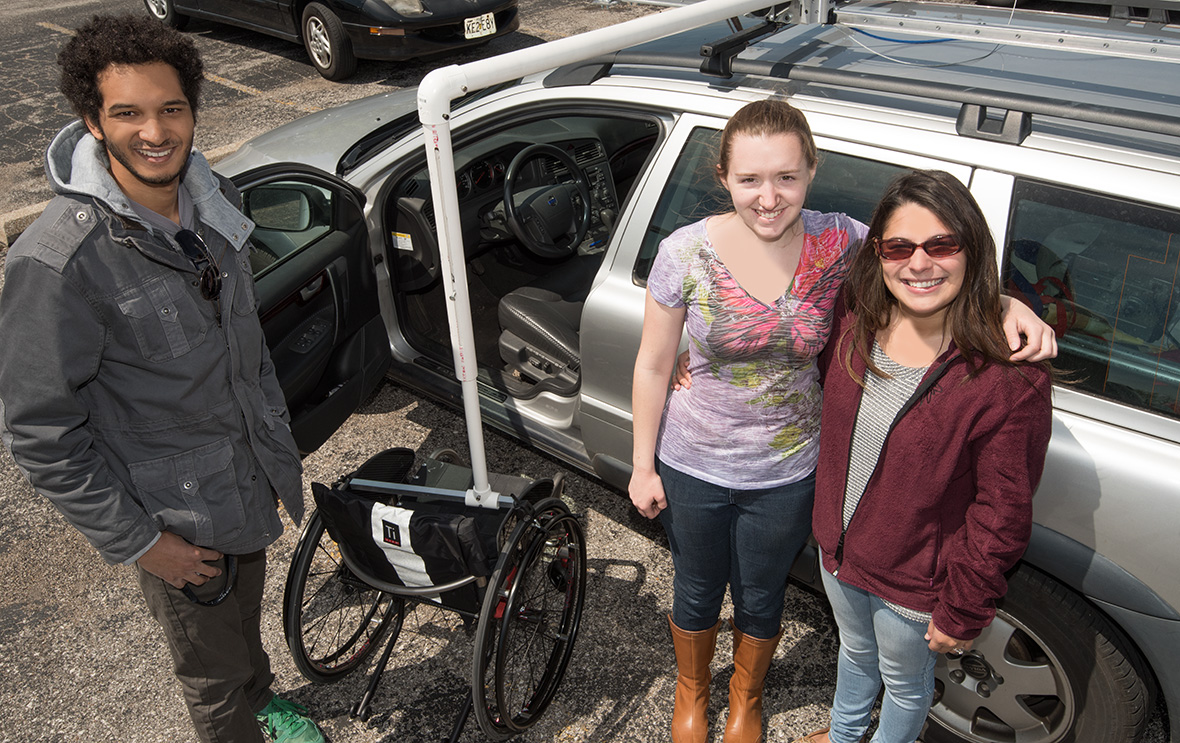
“In the second year of medical school, we realized that a lot of clinicians would come to lectures expressing concerns that things could be done much better in the hospital,” said Stephen W. Linderman, IDEA Labs president and an MD/PhD student. “Many of these problems seemed simple enough to solve, but there was no clear pathway for students to become engaged in solving them.”
Over the past two years, the founders have forged that pathway — building relationships across the university and St. Louis, creating a sustainable infrastructure for the years ahead and gaining national attention.
What began as a small group of students asking how they could help has since mushroomed into a movement involving hundreds of students, faculty mentors, alumni, investors and corporate sponsors.
Last April, the group officially became a tax-exempt nonprofit organization. IDEA Labs has resulted in 31 prototypes, 16 provisional patents, nine national competition winners and finalists, and 17 startups. Teams collectively have raised $2 million in outside investments.
Ideas span the gamut: the ability to access patients’ medical records with a swipe of a card; a smartphone app to ward off panic attacks; an implantable device that dramatically reduces the severity of epileptic seizures; a more accurate tool for small bowel exploration; and a wireless, disposable nasal endoscope, among others.
“We are a generation that was born into an exponential revolution of mobile technology,” said third-year medical student Ramin Lalezari, who serves as the IDEA Labs finance chair. “I’m optimistic about this next generation of physicians currently brewing in medical schools and residencies across the country. This generation of medical professionals is not only excited about using new technologies — they are creating them. And that’s what IDEA Labs is all about.”
The students consulted faculty for guidance and received startup and operational funding from the medical and engineering schools and the Skandalaris Center. Support also came from the Office of the Provost, the Office of Technology Management, the BJC Center for Clinical Excellence, St. Louis Children’s Hospital and The BALSA Group, a nonprofit led by graduate students and postdoctoral fellows.
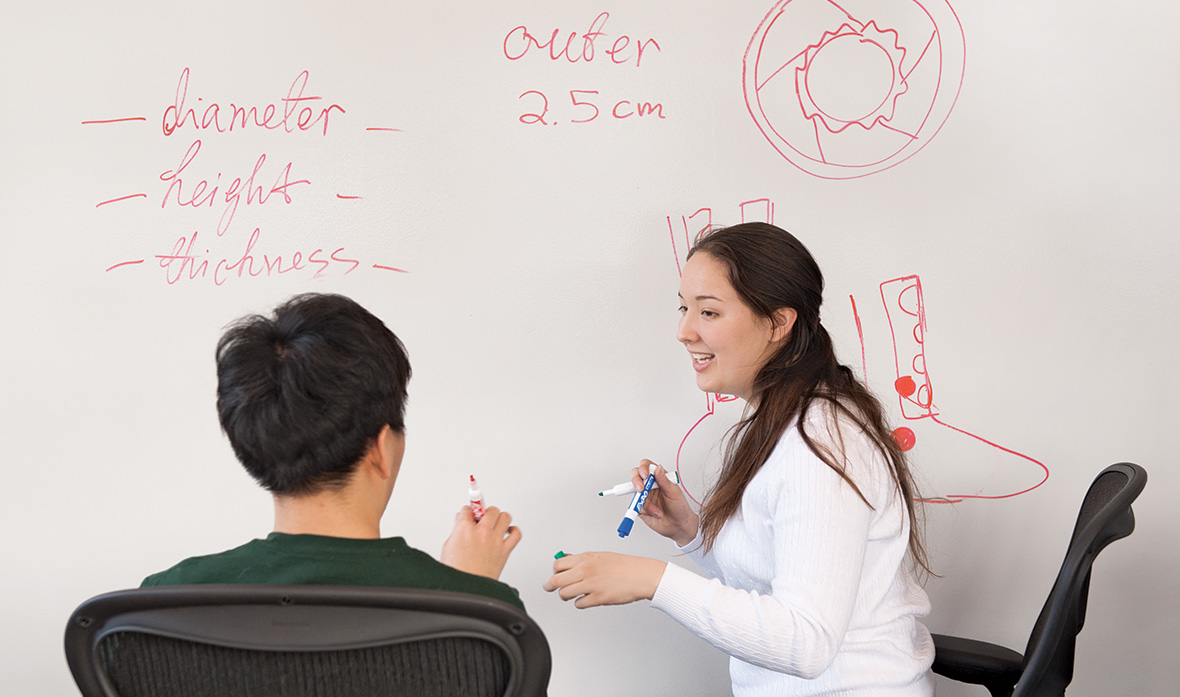
To kick things off, IDEA Labs founder and MD/PhD student Avik Som invited clinical faculty to an open mic venting session. For three hours, doctors shared their day-to-day challenges.
At that initial meeting, David B. Clifford, MD, the Melba and Forest Seay Professor of Clinical Neuropharmacology, described his interest in developing an angle-adjustable chair for patients undergoing a lumbar puncture (spinal tap).
This lengthy and often nerve-wracking procedure requires patients first to lie on their side for needle insertion and then to sit upright for spinal fluid collection. Clifford said such a chair would be economically viable, something teams consider when choosing projects. In response, students designed IdealTap, a compact chair that safely and efficiently swivels the patient without the need for extra personnel, and with just the pull of a lever. The device since has won $25,000 in the engineering school’s 2015 Discovery Competition.
The IDEA Labs group now has amassed a list of more than 150 clinical problems for which a solution can be built within one year. Problems continually are solicited through the IDEA Labs website and in partnership with the St. Louis Metropolitan Medical Society.
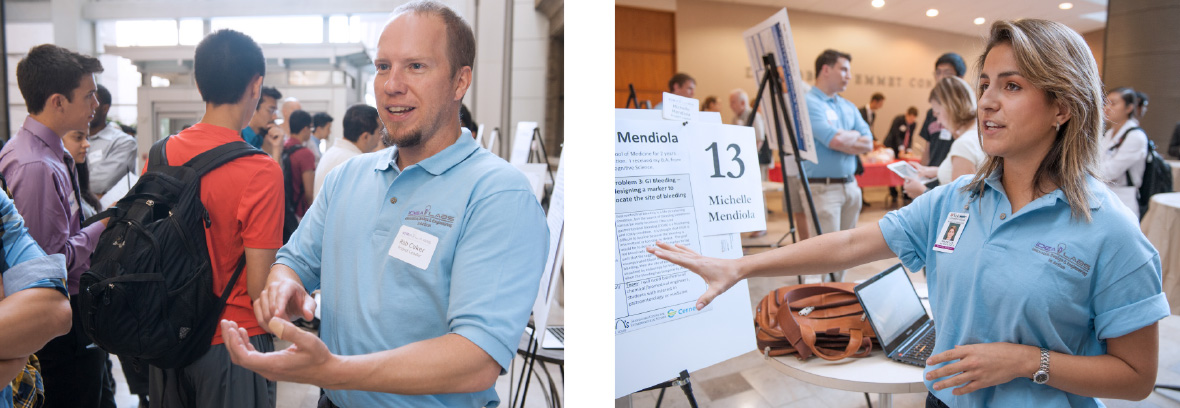
THE PROCESS
Team formation takes place at Problem Day, an intellectual jam session where “Grey’s Anatomy” meets “Let’s Make a Deal.” Each fall, students who applied to be project leaders put up posters that succinctly outline three problems. The display draws hundreds of milling students, potential partners in entrepreneurial enterprises. Business cards quickly are whisked back and forth as project leaders state their objectives and needs.
The focus for the project leader is to build a compatible and cohesive team of four to six students — ideally with backgrounds in medicine, engineering, business and other disciplines. Together, they will examine the ideas and then, in most instances, concentrate on just one. Blending their strengths, they will brainstorm, research, design, prototype and test novel devices and applications for patient care.
Over two semesters, IDEA Labs students work above and beyond their course load: shadowing in local clinics to better understand the patient perspective; conducting a market analysis; considering intellectual property and regulatory environments; writing a business plan; thinking about necessary preclinical testing, clinical trials and manufacturing processes; and taking preliminary steps to patent and commercialize their devices. Despite stipends of $2,000 per team provided by IDEA Labs, many aggressively fundraise to meet these milestones even faster.
The 26-member IDEA Labs executive board — consisting of students involved in their own startup projects — shepherds teams through the process, along with more than 60 faculty mentors. BioEntrepreneurship Core, the university’s biotech training and networking organization, also advises team members. Throughout the year, there are bi-monthly progress reports, training seminars and Q&As featuring startup experts.
“Here, we teach them to fail quickly and fail often,” said Vice President Ian Schillebeeckx, a graduate student in computer vision. “We tell them, ‘Work on the thing that most likely will kill your idea because it will save time, money and energy, and then go on to the next thing.’ We can teach medical students or engineers the tools of business.”
Teams have access to basic machine shop tools, electrical equipment, engineering software, a 3D printer, a computer server and Google Glass, among other resources. Lab space is available on the Medical and Danforth campuses, courtesy of the dean’s offices in the medical and engineering schools, and in the @4240 Building in the neighboring Cortex district, a 200-acre innovation hub. Space at the @4240 Building is provided through a partnership with the Cambridge Innovation Center, an entrepreneurial think tank whose first expansion outside of Boston is the Cortex district. Pro bono legal advice, including LLC filing and provisional patent assistance, is shared via representatives of Husch Blackwell, which opened an office in the building.
“Students are so technically capable once they get past the intimidation factor,” Schillebeeckx said. “Students can sprint if you give them the resources.”

THE PITCH
At Demo Day, the culminating event in the spring, all teams present posters. Six to eight teams with the most advanced prototypes pitch their ideas before a judging panel consisting of national leaders in the entrepreneurial and medical communities.
“Teams use this event to reveal their prototype publicly for the first time and test the waters of St. Louis and university entrepreneurship pipelines such as the Olin Cup, Arch Grants, BioGenerator and more,” said Managing Chair and MD/PhD student Josh Siegel.
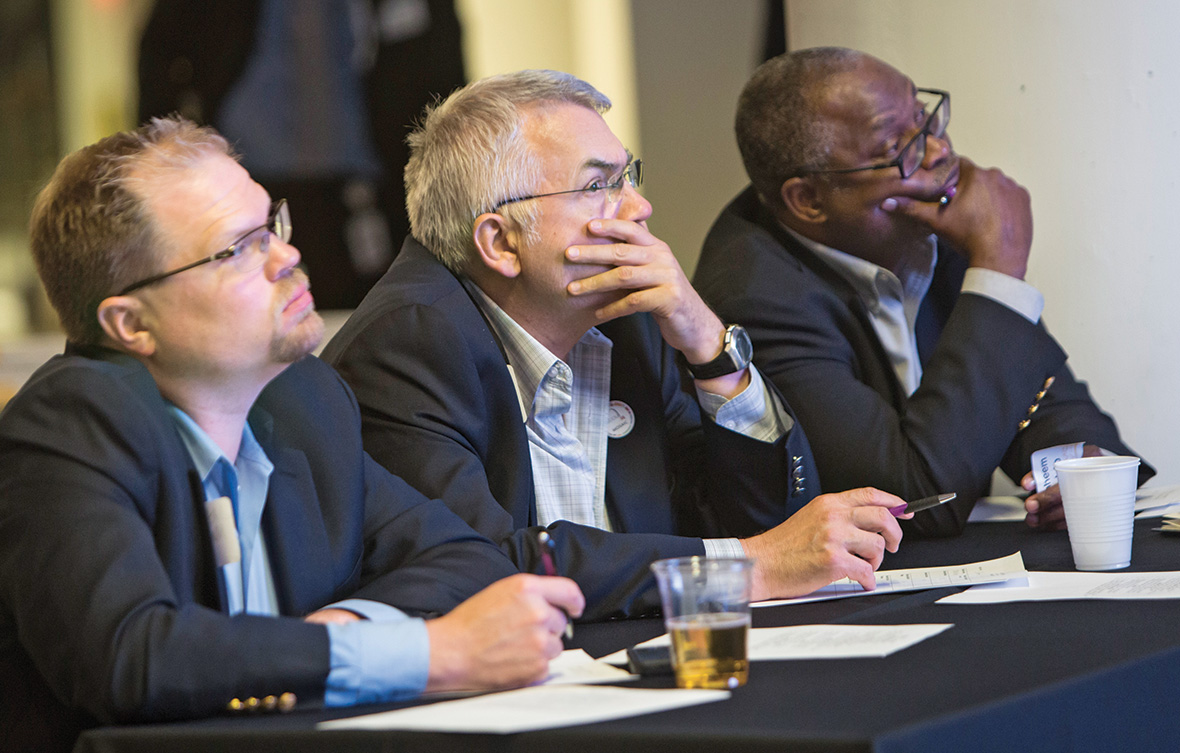
For the most promising projects, development extends well beyond Demo Day. Top competitors receive additional cash prizes. All students, whether they form a successful company or not, learn volumes about entrepreneurship and multidisciplinary research.
Unlike entrepreneurship fostered in most academic settings, students retain 100 percent of the intellectual property associated with their solutions. It’s an approach that resonates with students, and these entrepreneurial possibilities are opening a niche in medical education, broadening the impact of research and clinical care.
IDEA Labs leaders are expanding the student innovation platform into a network of biotechnology incubators at universities across the country. Washington University is leading the way in this national network of student entrepreneurs to co-develop resources, share talent and attract investors.
“As a physician, you’re limited by the number of patients you see in a work day,” Linderman said, “but if you can improve medical practice, then you can reach patients around the country and the world.”
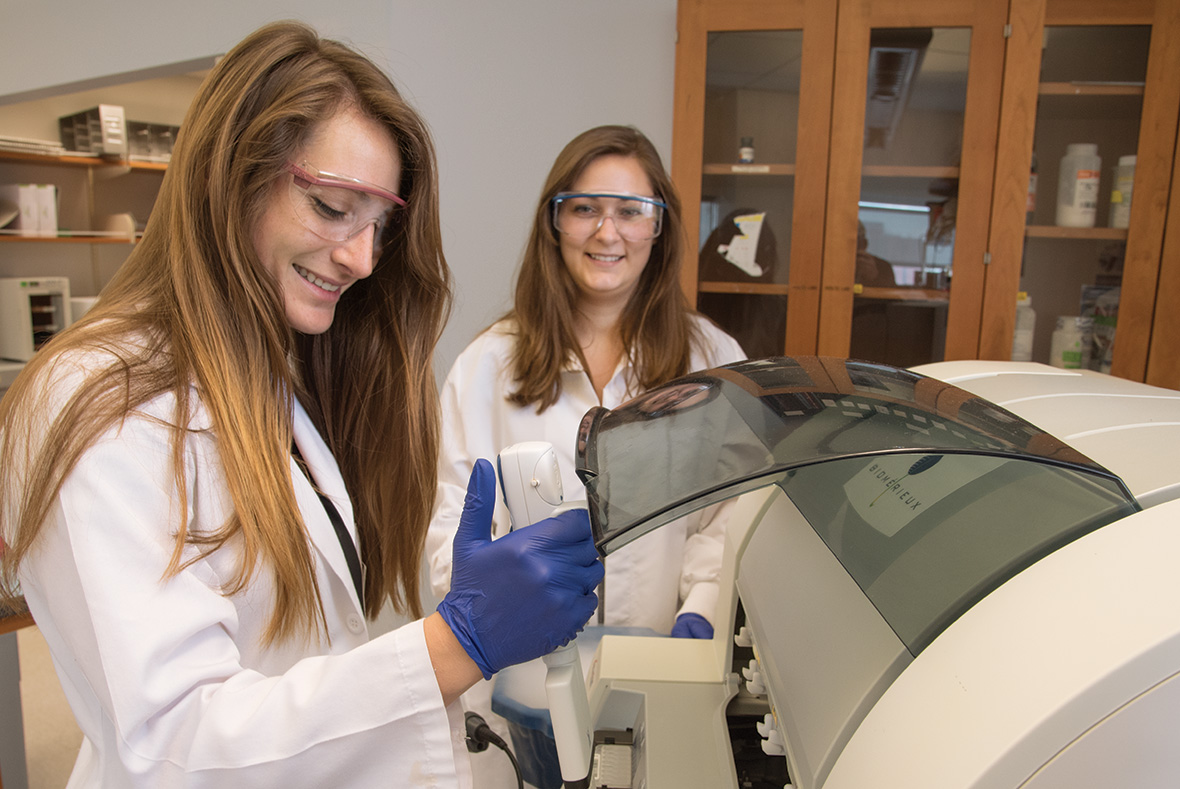
See dozens more examples at: idealabsincubator.org
EPHARMIX Already in clinics, this software has been credited with saving lives. This system sends patients automated text messages — customized, prescribable interventions — for a range of conditions. Epharmix can gauge pain, track weight and record seizures.
DATADOG HEALTH This Smartphone app uses vital signs to detect the onset of anxiety attacks and offers therapeutic interventions, such as breathing and relaxation techniques. Public release is anticipated this year.
CYSTOVIEW The team is integrating a wireless camera into cystoscopes to improve bedside cystoscopy procedures and enhance teaching. The wireless camera will broadcast the image to a monitor. By eliminating cords across a sterile field, infection risk is reduced.
KINOCOM Some patients with amyotrophic lateral sclerosis, stroke or spinal cord injuries suffer from near-total paralysis. Using a gyroscope-accelerometer, the KinoCOM team is helping a stroke patient communicate via finger movement. The students were inspired to create the device after meeting the patient in class. The patient continues to help test and tweak the invention.
EPI SQUARED The team tackled the problem of providing power to implantable devices, such as pacemakers, non- invasively. Many implantable devices use batteries that need to be replaced after five years. This requires additional surgeries, each of which can cost several tens of thousands of dollars. This team now is focused on nerve stimulator devices used in epilepsy.
Problem Day: 2-5 p.m. Sept. 25, @4240 Duncan
Demo Day: April 25, 2016
Published in the Autumn 2015 issue


